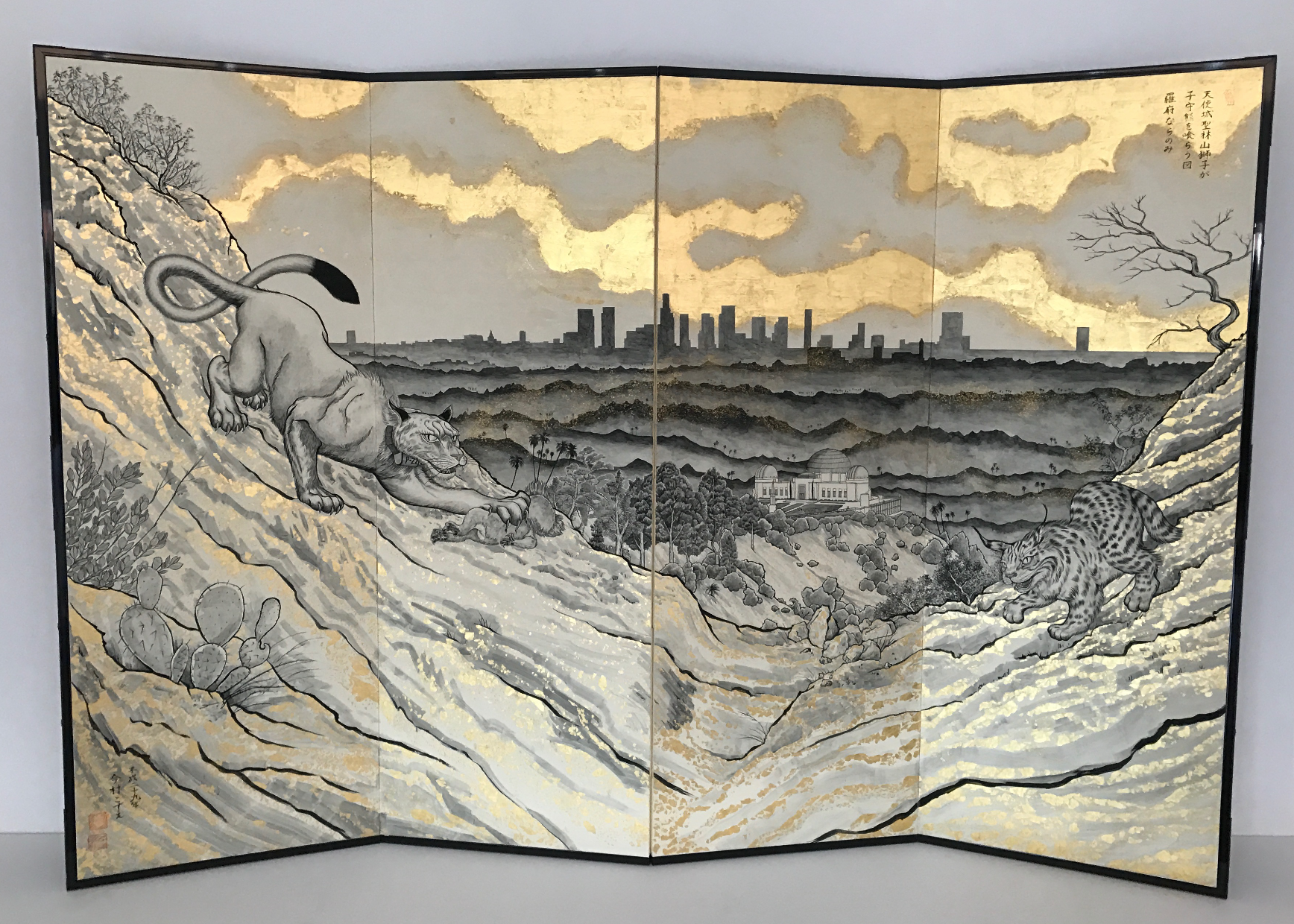You want to be friends with artists Kozyndan. Their work is relatable, subversive, funny and quintessentially LA.
Kozy and Dan Kitchens are a married Highland Park-based couple. They create worlds full of Japanese culture, sea animals, cityscapes, and absurd visual puns.
Kozy is Japanese, and Dan is from California. They met in art school at Cal State Fullerton and have been creating art together ever since, when they’re not traveling the world or swimming with whales.
Their most well-known piece, “Uprisings,” was inspired by the famous Japanese wood print, “The Great Wave.” That 19th Century image has been reproduced millions of times on t-shirts, postcards, and museums.
Kozyndan replaced the sea foam on the cresting wave with white bunnies that tumble over each other into the sea below.


Why bunnies? It’s a simple case of cross-cultural wordplay. According to Kozy, Japanese surfers call whitewash “flying bunnies.” It’s one example of the layers of visual jokes that pop up frequently in Kozyndan’s work. “Uprisings” has been a best-seller at the gallery and store, Giant Robot, since Eric Nakamura created the brand in 2001 and put “Uprisings” on the cover of Giant Robot Magazine in 2003. Giant Robot is known for curating the best in Japanese- American kitsch, selling prints alongside manga, toys, and posters. It was a first home for Kozy and Dan, who showed Nakamura their work when they were just starting out as illustrators.
Since then, Kozyndan have illustrated album covers for bands like Weezer and The Postal Service. They’ve become a stand-in for a certain brand of LA culture.
Their new show at Gregorio Escalante Gallery in Chinatown is called “The Golden State.” It’s a love letter to all things California.
“MOUNTAIN LION DINES ON KOALA (ONLY IN L.A.),” 2017

This painting is based on the infamous lone mountain lion of Griffith Park, P22. In 2003, the lion broke into the LA Zoo and “ate the face off a koala,” according to news reports. “We just thought that was a really only-in-LA moment, like that’s maybe never happened in the history of the world,” Dan said.

The lion is painted in traditional Japanese Nihonga style. In Japan, animal features are often exaggerated to look more mythological. Most ancient Japanese painters never saw the animals they were painting, so they replied purely on imagination. Case and point: look at those pretty eyes!

There are some tiny people in the painting, standing by the observatory. But you can barely see them. “I like animals better than people,” Kozy said.






